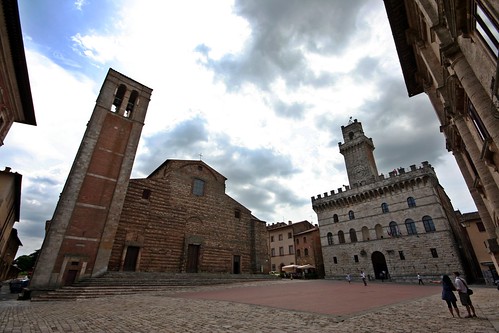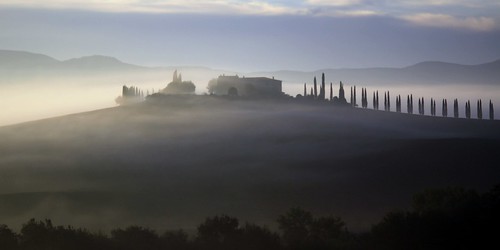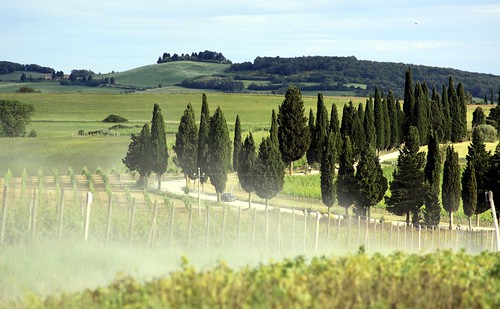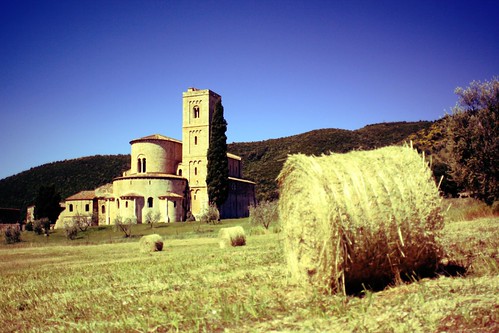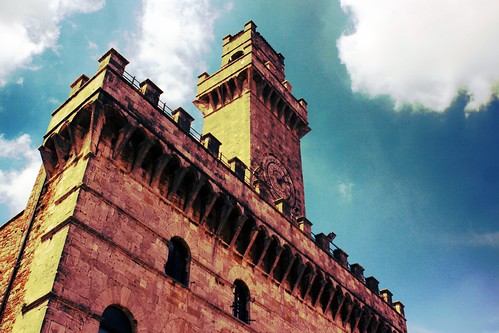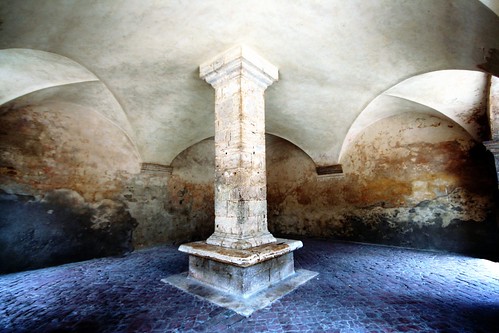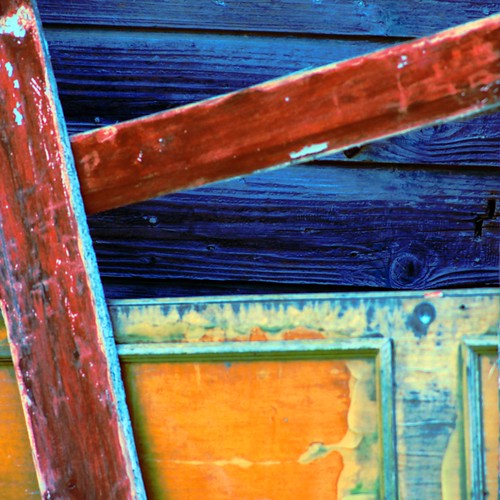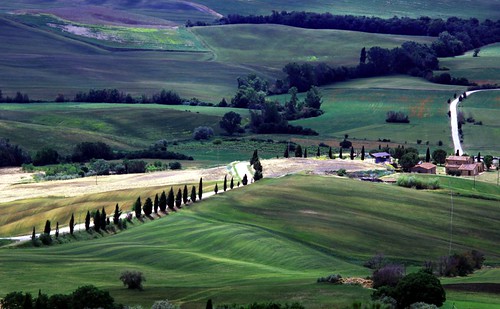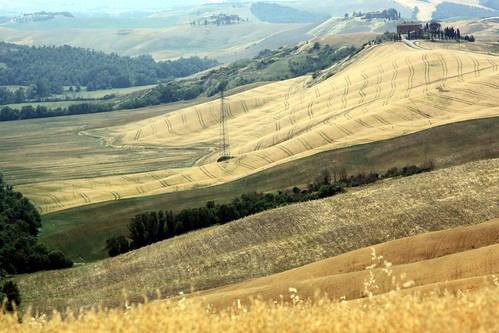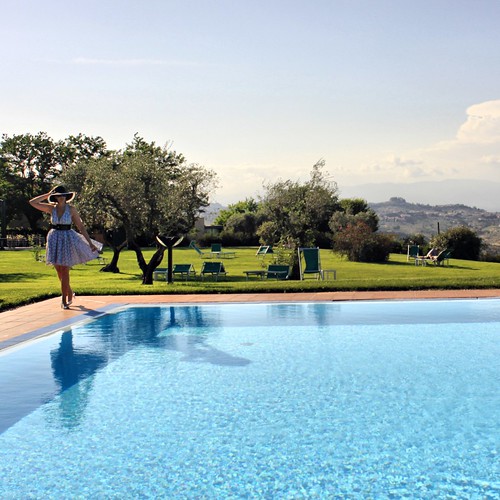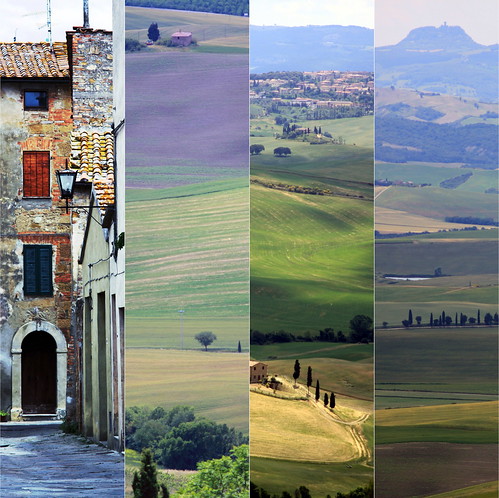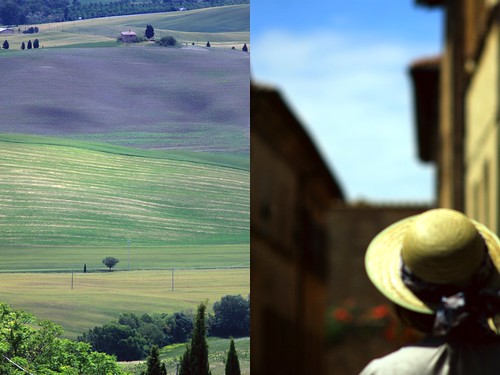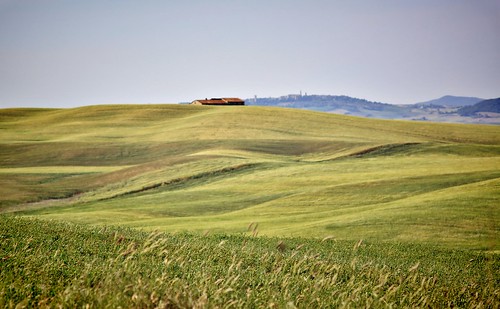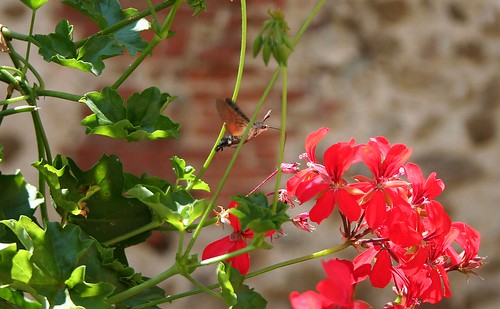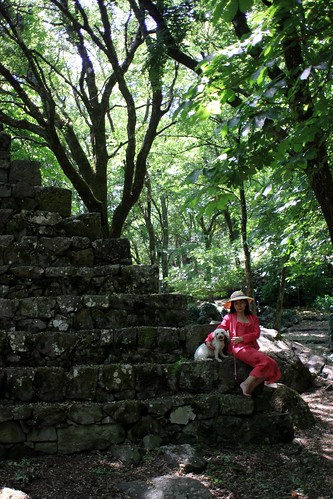30 July, 2011
Heading to the Cappuccino Sea
© Angela M. Lobefaro
All Rights Reserved
RIPRODUZIONE RISERVATA
taken in Chianciano Terme - Tuscany - Italy
Posted by
Angela Lobefaro
at
11:16:00 AM
0
comments
![]()
29 July, 2011
27 July, 2011
Dwarfed by Piazza Maggiore | Montepulciano
© Angela M. Lobefaro
All Rights Reserved
RIPRODUZIONE RISERVATA
taken in Montepulciano - Tuscany - Italy
Posted by
Angela Lobefaro
at
6:45:00 PM
0
comments
![]()
26 July, 2011
A Mist Rhapsody | Valdorcia Edition
© Angela M. Lobefaro
All Rights Reserved
© RIPRODUZIONE RISERVATA
Val d'Orcia*
UNESCO World Heritage Site
Typical landscape of the Val d’Orcia
State Party Italy
Type Cultural
Criteria iv, vi
Reference 1026
Region** Europe and North America
Inscription history
Inscription 2004 (28th Session)
* Name as inscribed on World Heritage List.
** Region as classified by UNESCO.
Wikimedia Commons has media related to: Val d'Orcia
The Val d’Orcia, or Valdorcia, is a region of Tuscany, central Italy, which extends from the hills south of Siena to Monte Amiata. It is characterised by gentle, carefully-cultivated hills occasionally broken by gullies and by picturesque towns and villages such as Pienza (rebuilt as an “ideal town” in the 15th century under the patronage of Pope Pius II), Radicofani (home to the notorious brigand-hero Ghino di Tacco) and Montalcino (the Brunello di Montalcino is counted among the most prestigious of Italian wines). It is a landscape which has become familiar through its depiction in works of art from the Renaissance painting to the modern photograph.
In 2004 the Val d’Orcia was added to the UNESCO list of World Heritage Sites under these criteria:
* Criterion (iv): The Val d’Orcia is an exceptional reflection of the way the landscape was re-written in Renaissance times to reflect the ideals of good governance and to create an aesthetically pleasing pictures.
* Criterion (vi): The landscape of the Val d’Orcia was celebrated by painters from the Scuola Senese, which flourished during the Renaissance. Images of the Val d’Orcia, and particularly depictions of landscapes where people are depicted as living in harmony with nature, have come to be seen as icons of the Renaissance and have profoundly influenced the development of landscape thinking.
thanks to Wikipedia
Posted by
Angela Lobefaro
at
2:57:00 PM
0
comments
![]()
24 July, 2011
No Time for Photos | Valdorcia Rally edition
© Angela M. Lobefaro
All Rights Reserved
RIPRODUZIONE RISERVATA
taken on the way to Pienza - Valdorcia
The Val d’Orcia, or Valdorcia, is a region of Tuscany, central Italy, which extends from the hills south of Siena to Monte Amiata. It is characterised by gentle, carefully cultivated hills occasionally broken by gullies and by picturesque towns and villages such as Pienza (rebuilt as an “ideal town” in the 15th century under the patronage of Pope Pius II), Radicofani (home to the notorious brigand-hero Ghino di Tacco) and Montalcino (the Brunello di Montalcino is counted among the most prestigious of Italian wines). It is a landscape which has become familiar through its depiction in works of art from the Renaissance painting to the modern photograph.
In 2004 the Val d’Orcia was added to the UNESCO list of World Heritage Sites under these criteria:
* Criterion (iv): The Val d’Orcia is an exceptional reflection of the way the landscape was re-written in Renaissance times to reflect the ideals of good governance and to create an aesthetically pleasing pictures.
* Criterion (vi): The landscape of the Val d’Orcia was celebrated by painters from the Scuola Senese, which flourished during the Renaissance. Images of the Val d’Orcia, and particularly depictions of landscapes where people are depicted as living in harmony with nature, have come to be seen as icons of the Renaissance and have profoundly influenced the development of landscape thinking.
Courtesy of Wikipedia
Darkr Gallery of my photos
Subscribe to my stream
Posted by
Angela Lobefaro
at
5:35:00 PM
0
comments
![]()
21 July, 2011
Abbazia di Sant'Antimo | Valdorcia
http://it.wikipedia.org/wiki/Abbazia_di_Sant%27Antimo
Posted by
Angela Lobefaro
at
6:39:00 PM
0
comments
![]()
20 July, 2011
On the Way to Radicofani
© Angela M. Lobefaro
All Rights Reserved
RIPRODUZIONE RISERVATA
taken on the way to Radicofani - Valdorcia
The Val d’Orcia, or Valdorcia, is a region of Tuscany, central Italy, which extends from the hills south of Siena to Monte Amiata. It is characterised by gentle, carefully cultivated hills occasionally broken by gullies and by picturesque towns and villages such as Pienza (rebuilt as an “ideal town” in the 15th century under the patronage of Pope Pius II), Radicofani (home to the notorious brigand-hero Ghino di Tacco) and Montalcino (the Brunello di Montalcino is counted among the most prestigious of Italian wines). It is a landscape which has become familiar through its depiction in works of art from the Renaissance painting to the modern photograph.
In 2004 the Val d’Orcia was added to the UNESCO list of World Heritage Sites under these criteria:
* Criterion (iv): The Val d’Orcia is an exceptional reflection of the way the landscape was re-written in Renaissance times to reflect the ideals of good governance and to create an aesthetically pleasing pictures.
* Criterion (vi): The landscape of the Val d’Orcia was celebrated by painters from the Scuola Senese, which flourished during the Renaissance. Images of the Val d’Orcia, and particularly depictions of landscapes where people are depicted as living in harmony with nature, have come to be seen as icons of the Renaissance and have profoundly influenced the development of landscape thinking.
Courtesy of Wikipedia
Darkr Gallery of my photos
Subscribe to my stream
Posted by
Angela Lobefaro
at
12:57:00 AM
0
comments
![]()
19 July, 2011
The Prince | Montepulciano
en.wikipedia.org/wiki/The_Prince
© Angela M. Lobefaro
All Rights Reserved
RIPRODUZIONE RISERVATA
taken in Montepulciano - Tuscany - Italy
Posted by
Angela Lobefaro
at
8:00:00 AM
0
comments
![]()
18 July, 2011
You Are My Pillar of Strength
© Angela M. Lobefaro
All Rights Reserved
RIPRODUZIONE RISERVATA
taken in Montepulciano - Tuscany - Italy
Posted by
Angela Lobefaro
at
7:06:00 PM
0
comments
![]()
17 July, 2011
Officially CLOSED
© Angela M. Lobefaro
All Rights Reserved
RIPRODUZIONE RISERVATA
taken in Camaioni - Tuscany
Posted by
Angela Lobefaro
at
10:11:00 AM
0
comments
![]()
14 July, 2011
Pienza's Colors Palette
© Angela M. Lobefaro
All Rights Reserved
RIPRODUZIONE RISERVATA
taken in Pienza - Valdorcia
The Val d’Orcia, or Valdorcia, is a region of Tuscany, central Italy, which extends from the hills south of Siena to Monte Amiata. It is characterised by gentle, carefully cultivated hills occasionally broken by gullies and by picturesque towns and villages such as Pienza (rebuilt as an “ideal town” in the 15th century under the patronage of Pope Pius II), Radicofani (home to the notorious brigand-hero Ghino di Tacco) and Montalcino (the Brunello di Montalcino is counted among the most prestigious of Italian wines). It is a landscape which has become familiar through its depiction in works of art from the Renaissance painting to the modern photograph.
In 2004 the Val d’Orcia was added to the UNESCO list of World Heritage Sites under these criteria:
* Criterion (iv): The Val d’Orcia is an exceptional reflection of the way the landscape was re-written in Renaissance times to reflect the ideals of good governance and to create an aesthetically pleasing pictures.
* Criterion (vi): The landscape of the Val d’Orcia was celebrated by painters from the Scuola Senese, which flourished during the Renaissance. Images of the Val d’Orcia, and particularly depictions of landscapes where people are depicted as living in harmony with nature, have come to be seen as icons of the Renaissance and have profoundly influenced the development of landscape thinking.
Courtesy of Wikipedia
Darkr Gallery of my photos
Subscribe to my stream
Posted by
Angela Lobefaro
at
10:18:00 PM
0
comments
![]()
13 July, 2011
Farewell Valdorcia
© Angela M. Lobefaro
All Rights Reserved
RIPRODUZIONE RISERVATA
taken near Asciano - Valdorcia
The Val d’Orcia, or Valdorcia, is a region of Tuscany, central Italy, which extends from the hills south of Siena to Monte Amiata. It is characterised by gentle, carefully cultivated hills occasionally broken by gullies and by picturesque towns and villages such as Pienza (rebuilt as an “ideal town” in the 15th century under the patronage of Pope Pius II), Radicofani (home to the notorious brigand-hero Ghino di Tacco) and Montalcino (the Brunello di Montalcino is counted among the most prestigious of Italian wines). It is a landscape which has become familiar through its depiction in works of art from the Renaissance painting to the modern photograph.
In 2004 the Val d’Orcia was added to the UNESCO list of World Heritage Sites under these criteria:
* Criterion (iv): The Val d’Orcia is an exceptional reflection of the way the landscape was re-written in Renaissance times to reflect the ideals of good governance and to create an aesthetically pleasing pictures.
* Criterion (vi): The landscape of the Val d’Orcia was celebrated by painters from the Scuola Senese, which flourished during the Renaissance. Images of the Val d’Orcia, and particularly depictions of landscapes where people are depicted as living in harmony with nature, have come to be seen as icons of the Renaissance and have profoundly influenced the development of landscape thinking.
Courtesy of Wikipedia
Darkr Gallery of my photos
Subscribe to my stream
Posted by
Angela Lobefaro
at
9:23:00 PM
0
comments
![]()
11 July, 2011
Meglio buttarci un occhio...
© Angela M. Lobefaro
All Rights Reserved
RIPRODUZIONE RISERVATA
Max's colleague from Ivrea
Posted by
Angela Lobefaro
at
1:39:00 AM
0
comments
![]()
10 July, 2011
The Long and Winding Road | Valdorcia Edition
© Angela M. Lobefaro
All Rights Reserved
RIPRODUZIONE RISERVATA
taken near Asciano - Valdorcia
The Val d’Orcia, or Valdorcia, is a region of Tuscany, central Italy, which extends from the hills south of Siena to Monte Amiata. It is characterised by gentle, carefully cultivated hills occasionally broken by gullies and by picturesque towns and villages such as Pienza (rebuilt as an “ideal town” in the 15th century under the patronage of Pope Pius II), Radicofani (home to the notorious brigand-hero Ghino di Tacco) and Montalcino (the Brunello di Montalcino is counted among the most prestigious of Italian wines). It is a landscape which has become familiar through its depiction in works of art from the Renaissance painting to the modern photograph.
In 2004 the Val d’Orcia was added to the UNESCO list of World Heritage Sites under these criteria:
* Criterion (iv): The Val d’Orcia is an exceptional reflection of the way the landscape was re-written in Renaissance times to reflect the ideals of good governance and to create an aesthetically pleasing pictures.
* Criterion (vi): The landscape of the Val d’Orcia was celebrated by painters from the Scuola Senese, which flourished during the Renaissance. Images of the Val d’Orcia, and particularly depictions of landscapes where people are depicted as living in harmony with nature, have come to be seen as icons of the Renaissance and have profoundly influenced the development of landscape thinking.
Courtesy of Wikipedia
Darkr Gallery of my photos
Subscribe to my stream
Posted by
Angela Lobefaro
at
12:46:00 PM
0
comments
![]()
08 July, 2011
07 July, 2011
Valdorcia Inside Out
© Angela M. Lobefaro
All Rights Reserved
RIPRODUZIONE RISERVATA
taken in Pienza - Valdorcia
The Val d’Orcia, or Valdorcia, is a region of Tuscany, central Italy, which extends from the hills south of Siena to Monte Amiata. It is characterised by gentle, carefully cultivated hills occasionally broken by gullies and by picturesque towns and villages such as Pienza (rebuilt as an “ideal town” in the 15th century under the patronage of Pope Pius II), Radicofani (home to the notorious brigand-hero Ghino di Tacco) and Montalcino (the Brunello di Montalcino is counted among the most prestigious of Italian wines). It is a landscape which has become familiar through its depiction in works of art from the Renaissance painting to the modern photograph.
In 2004 the Val d’Orcia was added to the UNESCO list of World Heritage Sites under these criteria:
* Criterion (iv): The Val d’Orcia is an exceptional reflection of the way the landscape was re-written in Renaissance times to reflect the ideals of good governance and to create an aesthetically pleasing pictures.
* Criterion (vi): The landscape of the Val d’Orcia was celebrated by painters from the Scuola Senese, which flourished during the Renaissance. Images of the Val d’Orcia, and particularly depictions of landscapes where people are depicted as living in harmony with nature, have come to be seen as icons of the Renaissance and have profoundly influenced the development of landscape thinking.
Courtesy of Wikipedia
Darkr Gallery of my photos
Subscribe to my stream
Posted by
Angela Lobefaro
at
10:21:00 PM
0
comments
![]()
Valdorcia Syndrome
© Angela M. Lobefaro
All Rights Reserved
RIPRODUZIONE RISERVATA
taken in Pienza - Valdorcia
The Val d’Orcia, or Valdorcia, is a region of Tuscany, central Italy, which extends from the hills south of Siena to Monte Amiata. It is characterised by gentle, carefully cultivated hills occasionally broken by gullies and by picturesque towns and villages such as Pienza (rebuilt as an “ideal town” in the 15th century under the patronage of Pope Pius II), Radicofani (home to the notorious brigand-hero Ghino di Tacco) and Montalcino (the Brunello di Montalcino is counted among the most prestigious of Italian wines). It is a landscape which has become familiar through its depiction in works of art from the Renaissance painting to the modern photograph.
In 2004 the Val d’Orcia was added to the UNESCO list of World Heritage Sites under these criteria:
* Criterion (iv): The Val d’Orcia is an exceptional reflection of the way the landscape was re-written in Renaissance times to reflect the ideals of good governance and to create an aesthetically pleasing pictures.
* Criterion (vi): The landscape of the Val d’Orcia was celebrated by painters from the Scuola Senese, which flourished during the Renaissance. Images of the Val d’Orcia, and particularly depictions of landscapes where people are depicted as living in harmony with nature, have come to be seen as icons of the Renaissance and have profoundly influenced the development of landscape thinking.
Courtesy of Wikipedia
Darkr Gallery of my photos
Subscribe to my stream
Posted by
Angela Lobefaro
at
1:00:00 AM
0
comments
![]()
06 July, 2011
Valdorcia Syndrome
© Angela M. Lobefaro
All Rights Reserved
RIPRODUZIONE RISERVATA
taken in Pienza - Valdorcia
The Val d’Orcia, or Valdorcia, is a region of Tuscany, central Italy, which extends from the hills south of Siena to Monte Amiata. It is characterised by gentle, carefully cultivated hills occasionally broken by gullies and by picturesque towns and villages such as Pienza (rebuilt as an “ideal town” in the 15th century under the patronage of Pope Pius II), Radicofani (home to the notorious brigand-hero Ghino di Tacco) and Montalcino (the Brunello di Montalcino is counted among the most prestigious of Italian wines). It is a landscape which has become familiar through its depiction in works of art from the Renaissance painting to the modern photograph.
In 2004 the Val d’Orcia was added to the UNESCO list of World Heritage Sites under these criteria:
* Criterion (iv): The Val d’Orcia is an exceptional reflection of the way the landscape was re-written in Renaissance times to reflect the ideals of good governance and to create an aesthetically pleasing pictures.
* Criterion (vi): The landscape of the Val d’Orcia was celebrated by painters from the Scuola Senese, which flourished during the Renaissance. Images of the Val d’Orcia, and particularly depictions of landscapes where people are depicted as living in harmony with nature, have come to be seen as icons of the Renaissance and have profoundly influenced the development of landscape thinking.
Courtesy of Wikipedia
Darkr Gallery of my photos
Subscribe to my stream
Posted by
Angela Lobefaro
at
9:40:00 PM
0
comments
![]()
04 July, 2011
Navigating in Valdorcia
© Angela M. Lobefaro
All Rights Reserved
RIPRODUZIONE RISERVATA
taken in Radicofani - Valdorcia
The Val d’Orcia, or Valdorcia, is a region of Tuscany, central Italy, which extends from the hills south of Siena to Monte Amiata. It is characterised by gentle, carefully cultivated hills occasionally broken by gullies and by picturesque towns and villages such as Pienza (rebuilt as an “ideal town” in the 15th century under the patronage of Pope Pius II), Radicofani (home to the notorious brigand-hero Ghino di Tacco) and Montalcino (the Brunello di Montalcino is counted among the most prestigious of Italian wines). It is a landscape which has become familiar through its depiction in works of art from the Renaissance painting to the modern photograph.
In 2004 the Val d’Orcia was added to the UNESCO list of World Heritage Sites under these criteria:
* Criterion (iv): The Val d’Orcia is an exceptional reflection of the way the landscape was re-written in Renaissance times to reflect the ideals of good governance and to create an aesthetically pleasing pictures.
* Criterion (vi): The landscape of the Val d’Orcia was celebrated by painters from the Scuola Senese, which flourished during the Renaissance. Images of the Val d’Orcia, and particularly depictions of landscapes where people are depicted as living in harmony with nature, have come to be seen as icons of the Renaissance and have profoundly influenced the development of landscape thinking.
Courtesy of Wikipedia
Darkr Gallery of my photos
Subscribe to my stream
Posted by
Angela Lobefaro
at
8:19:00 AM
0
comments
![]()
03 July, 2011
02 July, 2011
Sitting on the Pyramid in Valdorcia | Radicofani
© Angela M. Lobefaro
All Rights Reserved
RIPRODUZIONE RISERVATA
taken in Radicofani - Valdorcia
The Val d’Orcia, or Valdorcia, is a region of Tuscany, central Italy, which extends from the hills south of Siena to Monte Amiata. It is characterised by gentle, carefully cultivated hills occasionally broken by gullies and by picturesque towns and villages such as Pienza (rebuilt as an “ideal town” in the 15th century under the patronage of Pope Pius II), Radicofani (home to the notorious brigand-hero Ghino di Tacco) and Montalcino (the Brunello di Montalcino is counted among the most prestigious of Italian wines). It is a landscape which has become familiar through its depiction in works of art from the Renaissance painting to the modern photograph.
In 2004 the Val d’Orcia was added to the UNESCO list of World Heritage Sites under these criteria:
* Criterion (iv): The Val d’Orcia is an exceptional reflection of the way the landscape was re-written in Renaissance times to reflect the ideals of good governance and to create an aesthetically pleasing pictures.
* Criterion (vi): The landscape of the Val d’Orcia was celebrated by painters from the Scuola Senese, which flourished during the Renaissance. Images of the Val d’Orcia, and particularly depictions of landscapes where people are depicted as living in harmony with nature, have come to be seen as icons of the Renaissance and have profoundly influenced the development of landscape thinking.
Courtesy of Wikipedia
Darkr Gallery of my photos
Subscribe to my stream
Posted by
Angela Lobefaro
at
11:30:00 AM
0
comments
![]()

